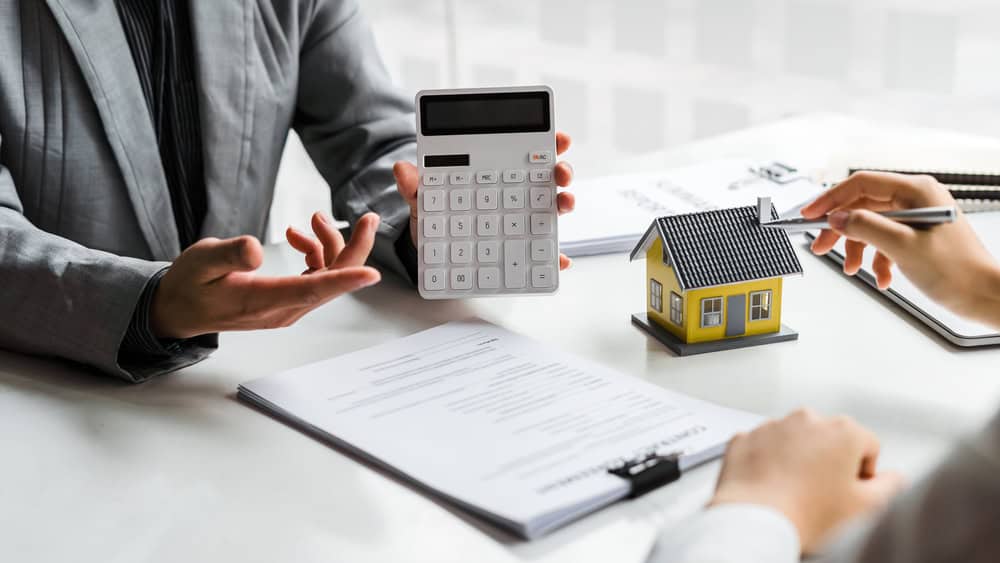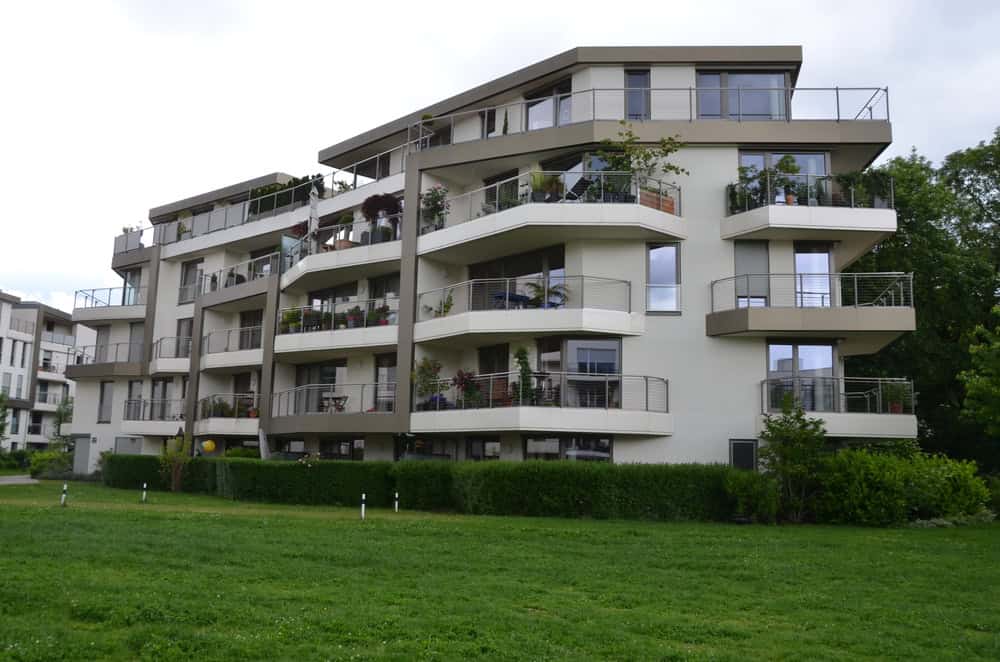The purchase price factor of a property, also known as the multiplier, indicates the income value you can expect from this property. It is an important indicator for you if you are thinking of buying a rented property as an investment. With the help of the property purchase price factor, you can get a quick impression of whether an investment in this property is worthwhile, as the purchase price factor for real estate puts the purchase price for the property in relation to the net rental income that can be expected annually.
Find out here how the purchase price factor for a property can be calculated and which details you need to pay attention to.
What is the purchase price factor or multiplier used for?
The purchase price factor tells you whether an investment you make by buying a rental property is worthwhile. The purchase price factor for real estate gives you an initial indication of whether it is an attractive property to invest your money in.
The property purchase price factor shows how many years it will take for the money you invest in the property to pay for itself. The expected basic rent is used as a comparative value. The decisive factors are therefore the purchase price and the rental income from the basic rent. The purchase price for a property is also known as the multiplier, discount factor or simply the (value) factor.
Another indicator is the property yield, which tells you what profit you can expect from a property over a longer period of time. The purchase price factor for your property also tells you how the purchase price relates to the rental income to be generated. You can see in how many years the property will have refinanced itself. A common value is 15 to 20 years. In particularly attractive city locations, the purchase price factor for a property can be 40 years or more.
What role does the purchase price factor play in real estate sales?
The purchase price factor for real estate should not only be used by the potential buyer, but also by the seller of a property. The purchase price factor serves as a guide for the seller to determine the purchase price. If he knows the prevailing purchase price factor in his location, he can draw conclusions about the purchase price by factoring in the expected rental income. The seller therefore has a quick and uncomplicated tool at hand with the purchase price factor for real estate, which gives him an indication of the approximate price he can offer his property for on the market. However, more extensive calculations are required to determine a more precise price. The property purchase price factor only provides an approximate value. Vandenberg ‘s team of experts will be happy to provide you with a precise valuation.
The purchase price factor for real estate in Berlin
Berlin is a multifaceted city with various districts in different price ranges. It is therefore not surprising that the purchase price factor for real estate in Berlin has a wide range. It starts at 29 and goes up to 37, which means that a property will pay for itself in 29 to 37 years, depending on the district. In the most expensive areas, you therefore have to be prepared to have 37 years of rental income before the property is refinanced. With this purchase price factor for real estate, Berlin, followed by Hamburg, is the most expensive place in Germany.

How do you calculate the purchase price factor?
Calculating the purchase price factor for a property is done in no time at all. Calculate how much net rent the property will give you per year. The net rent is the basic rent adjusted for service charges.
Now all you need to do is take the purchase price of your property and divide this value by the annual net income for the basic rent of the property.
You receive the number of years in which the rental income generated is equal to the purchase price.
Imagine, for example, that you were to purchase a property for €300,000, from which €1,000 net rental income is expected each month. That would be an annual rental income of €12,000. If you now divide 300,000 by 12,000, you get a purchase price factor of 25. It would therefore take 25 years for this property to be refinanced by the rental income.
This is how the pure calculation of the purchase price factor for real estate works. However, the purchase price factor is a variable that will most likely fluctuate during its term. The purchase price factor for real estate indicates the net initial yield because its calculation is based on the rental income that can be expected at the time of purchase. However, rental income can change. Imagine a tenant moves out and you are unable to rent the property out again quickly. In this case, the purchase price factor increases. The multiplier decreases if you could let the apartments at a higher rent. All these considerations should be taken into account when calculating the purchase price factor for real estate.
The purchase price factor for real estate not only allows you to calculate the yield of a property. You can also use the purchase price factor to infer the approximate purchase price of a property. This can be useful for a seller who wants to get an idea of what their property is worth on the market. To do this, simply multiply the achievable annual rental income by the local purchase price factor.
What should I bear in mind when calculating the purchase price factor? - Tips
For a potential buyer of a property to let, it is not only important to know the purchase price factor. Do not rest on the simple formula presented above, but include other costs that play an important role in the purchase of the property. The ancillary purchase costs should not be neglected. These include costs for the land register entry, the notary, the land transfer tax and the estate agent’s commission. The so-called house charges also have an impact. This refers to the costs for refuse collection, electricity and administration. You should also have a maintenance reserve in case repairs or renovations are required.
To calculate a more accurate purchase price factor for real estate, you should therefore add all these costs, the ancillary purchase price costs, to the purchase price. The costs for the house expenses that are not apportionable should therefore be deducted from the rental income.
This will give you a more accurate impression of whether the property you are looking at is a profitable one.
It is also best to consult your tax advisor before purchasing a new investment property. They can provide you with important information on the tax aspects relating to the property, such as rental income, income-related expenses and depreciation. These also have an impact on the return.

Which purchase price factor is good?
You have now learned how to calculate the purchase price factor for real estate, but you don’t really know what to do with the multiplier itself. Here you can find out how to interpret the calculated real estate purchase price factor for your purposes.
As a general guide, a purchase price factor of 20 is a favorable average. Your aim must be to refinance the purchase price of the property as quickly as possible through the rental income, and the prospect of 20 years is good.
However, the purchase price factor is absolutely dependent on the location. For this reason, the same purchase price factor of 20 cannot apply to the whole of Germany. It is increasing and in many locations it is already 25. In attractive locations in conurbations, you should even expect a purchase price factor of around 30. The expected increase in the value of the property also plays a role in the amount of the multiplier.
However, you should not be misled by the expectation of constantly rising rents when calculating the purchase price factor for real estate. The fact is that rents have been rising for a number of years and landlords have been able to look forward to rising net rental income. However, this trend could soon be broken. Namely, when the supply of housing increases due to new construction and tenants are consequently no longer willing to pay high rents.
Another factor is the interest on the loan. Although these are not directly included in the calculation of the purchase price factor for real estate, they are worth considering. Loan interest rates tend to rise during this period. This makes buying a property less favorable, which must be taken into account when calculating the expected return.
At what purchase price factor is a property too expensive?
There is no fixed rule as to the purchase price factor above which a property is considered too expensive. A low purchase price factor can be an indication of a favorable price, but there are many other factors that must also be considered before a decision is made. A real estate investment professional can assess whether or not a particular property is too expensive by comparing the purchase price factor with other factors such as the potential for capital growth, operating costs and current market conditions. However, it is important to note that there is always some risk involved in real estate investing, and it is always important to be well informed before making a decision.
The reference point of 20 is not meaningful if you consider that the purchase price factor is subject to major fluctuations throughout Germany depending on the location. In a very good location, you will need a longer period of time until the property has paid for itself. In simple locations in Bremen, for example, you only need 15 years to refinance the property, whereas in the best locations in Munich you can expect a purchase price factor of 43. This example only reflects the situation in the major cities. If we also include the purchase price factors in rural areas, an even greater range emerges. University cities with a purchase price factor of 20 to 24 are particularly attractive for an investment.
It is best to calculate the purchase price factor for your property and then compare it with the local purchase price factor for the district of the city you are targeting. This is the best way to get an idea of whether the purchase price factor for your property is too expensive.



